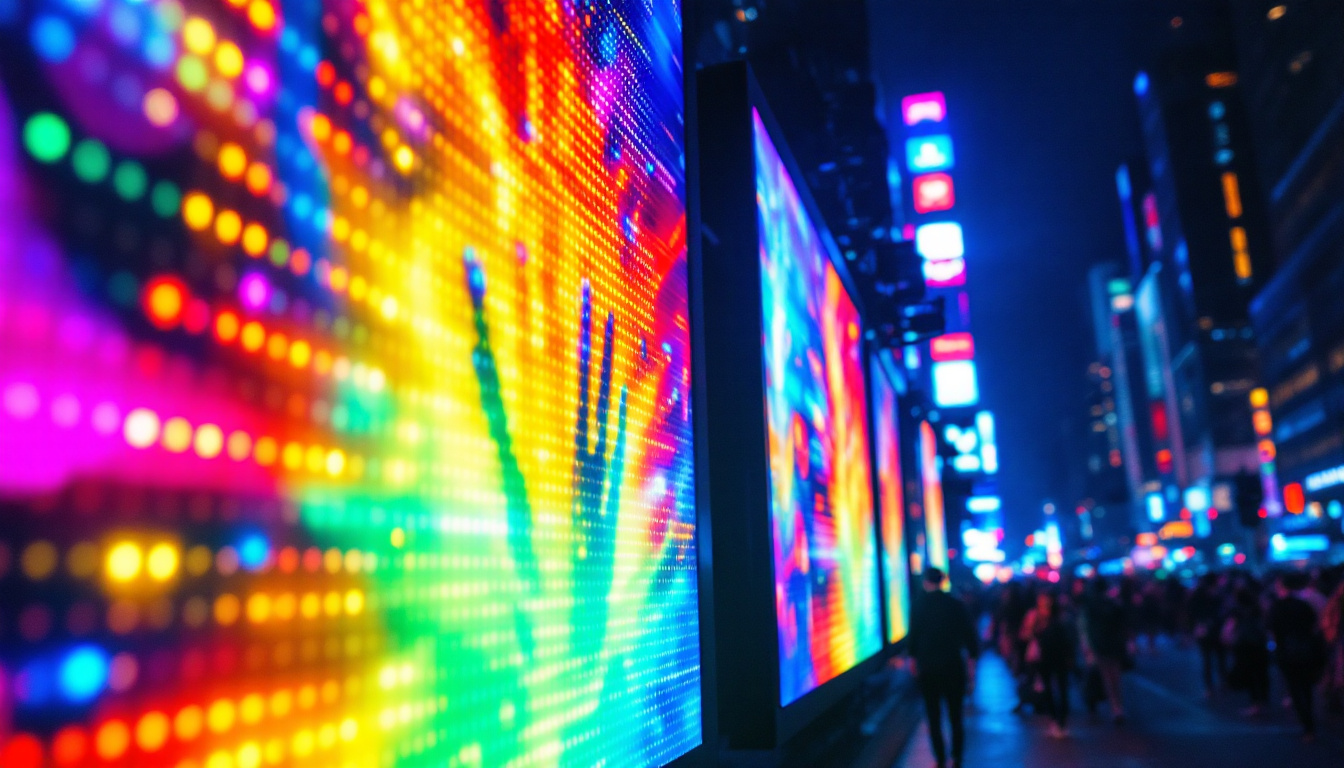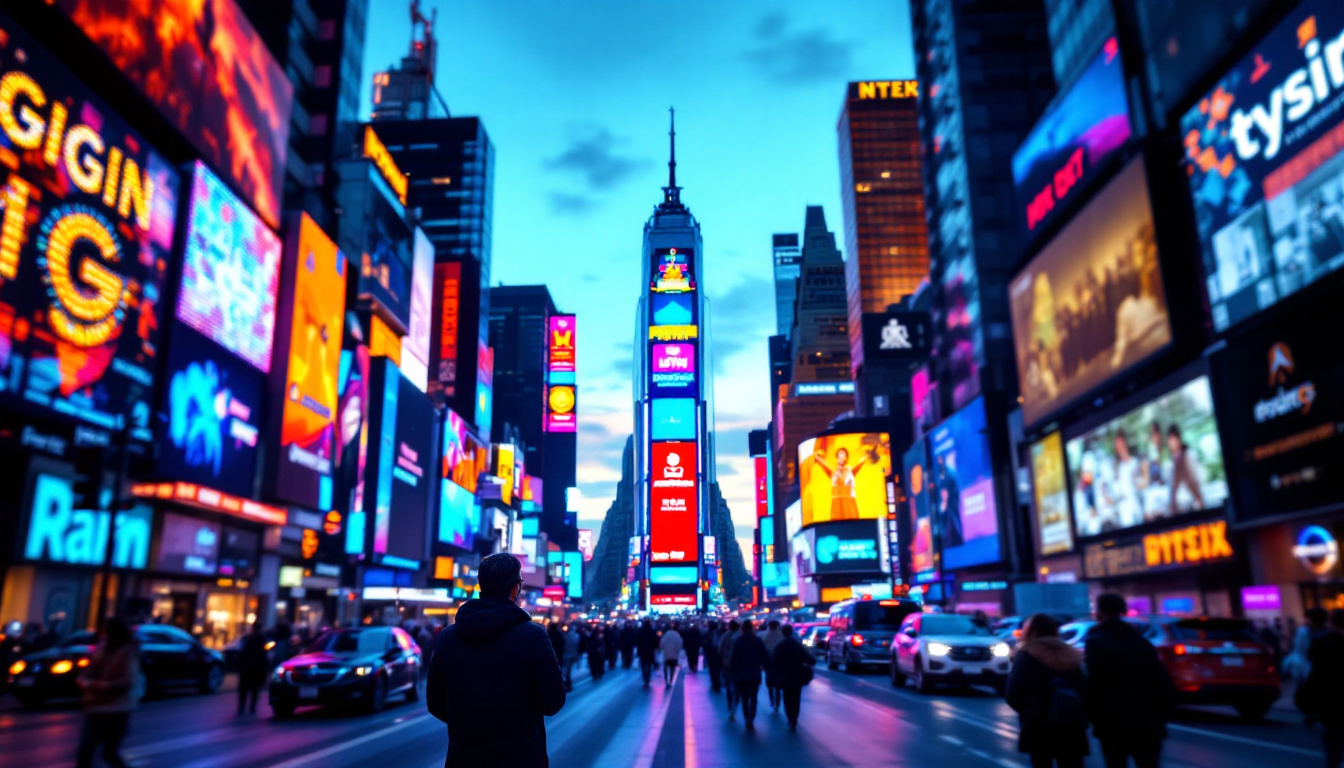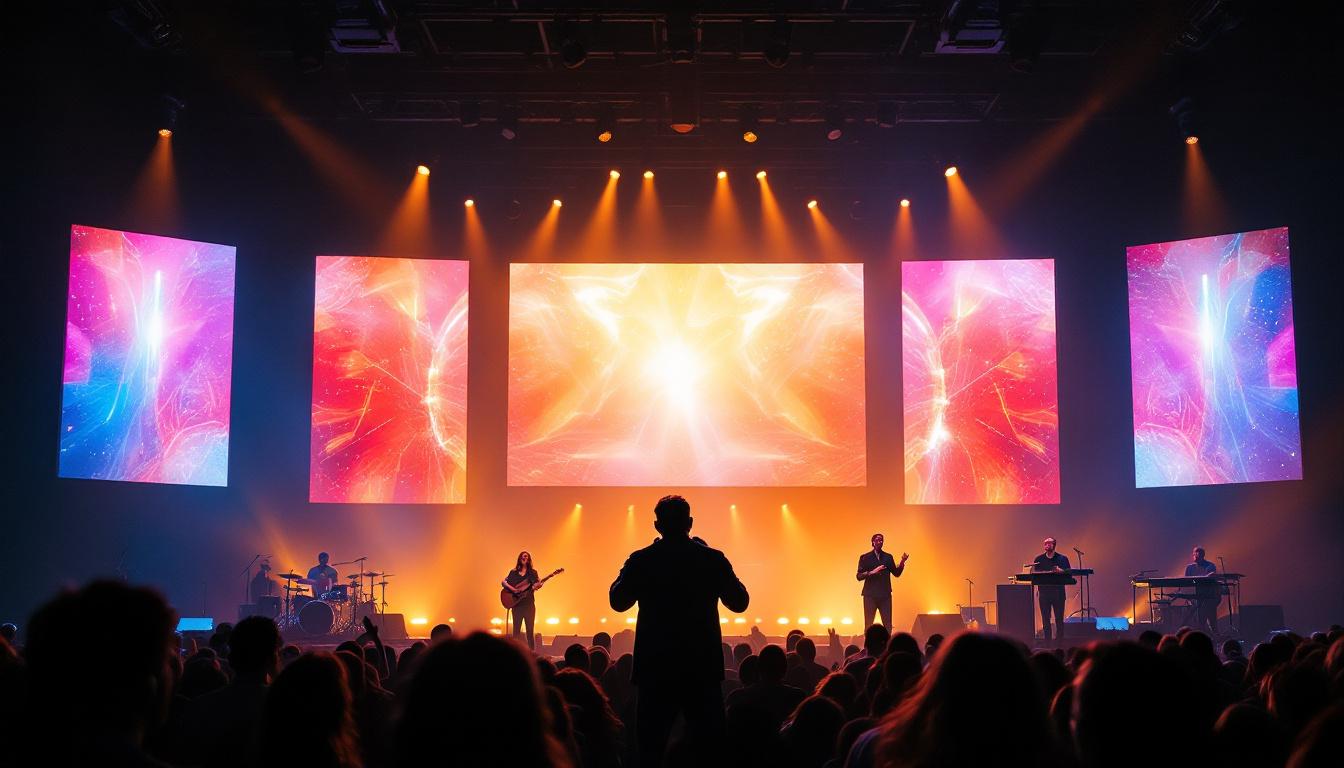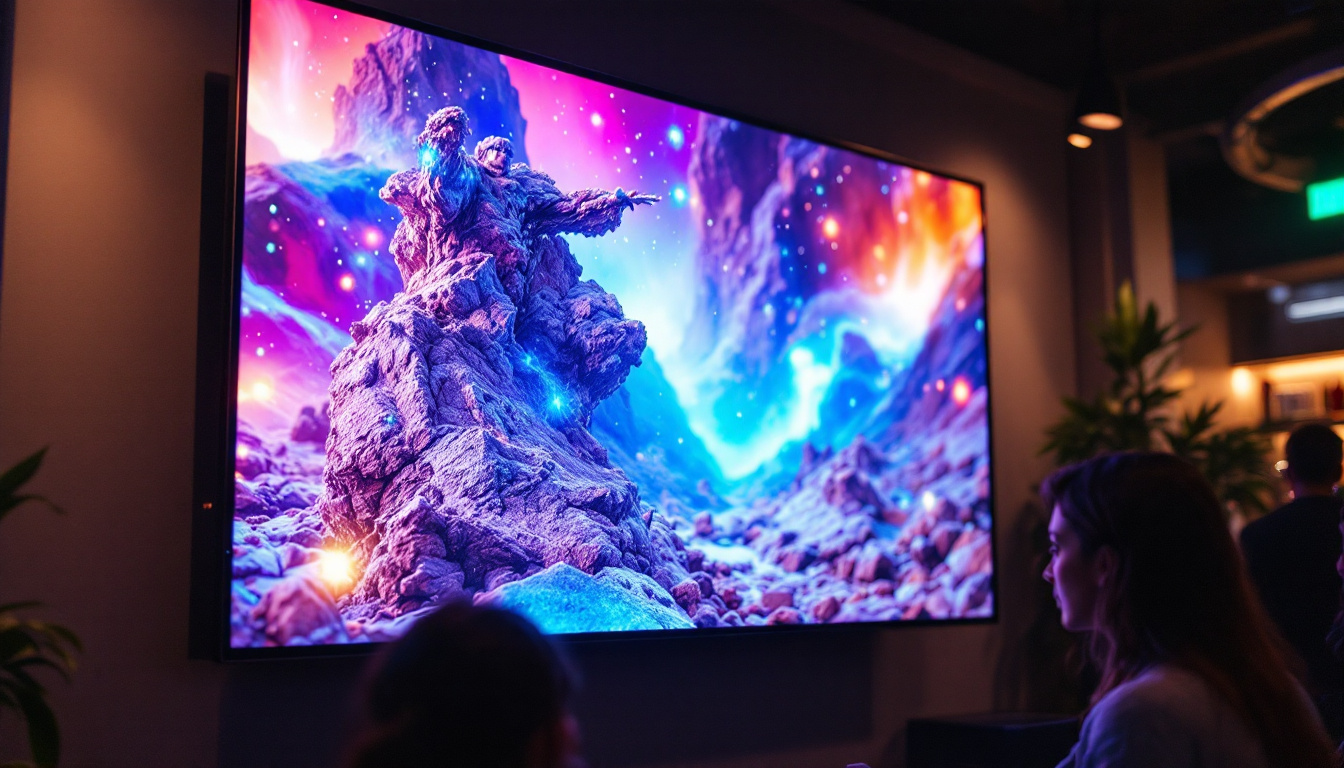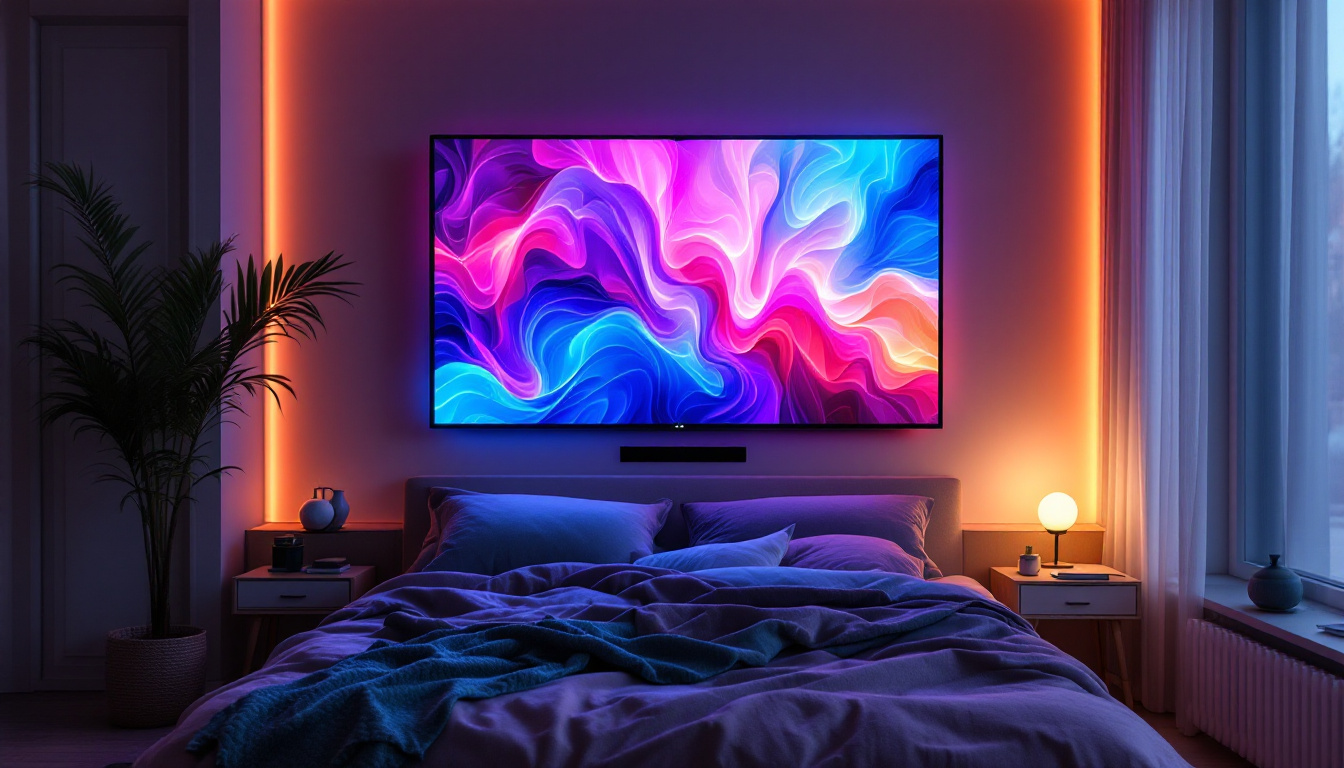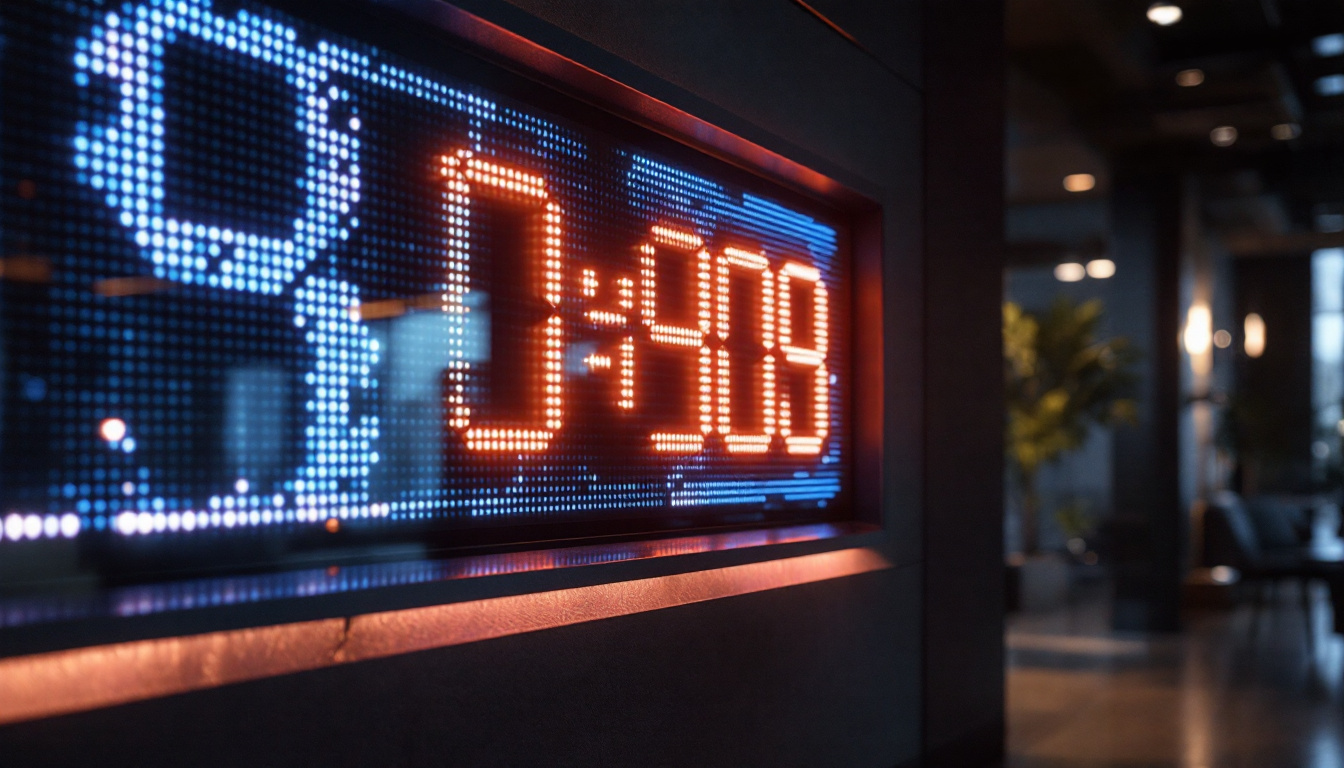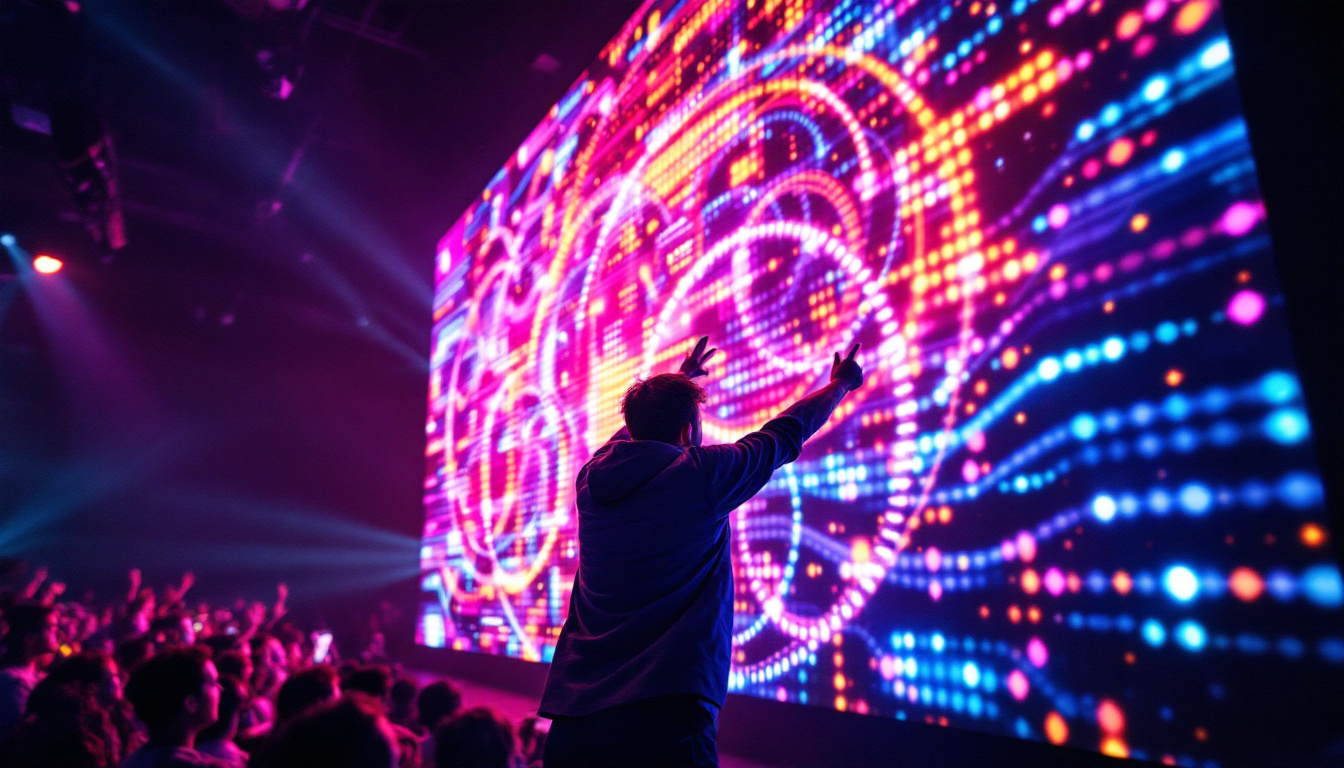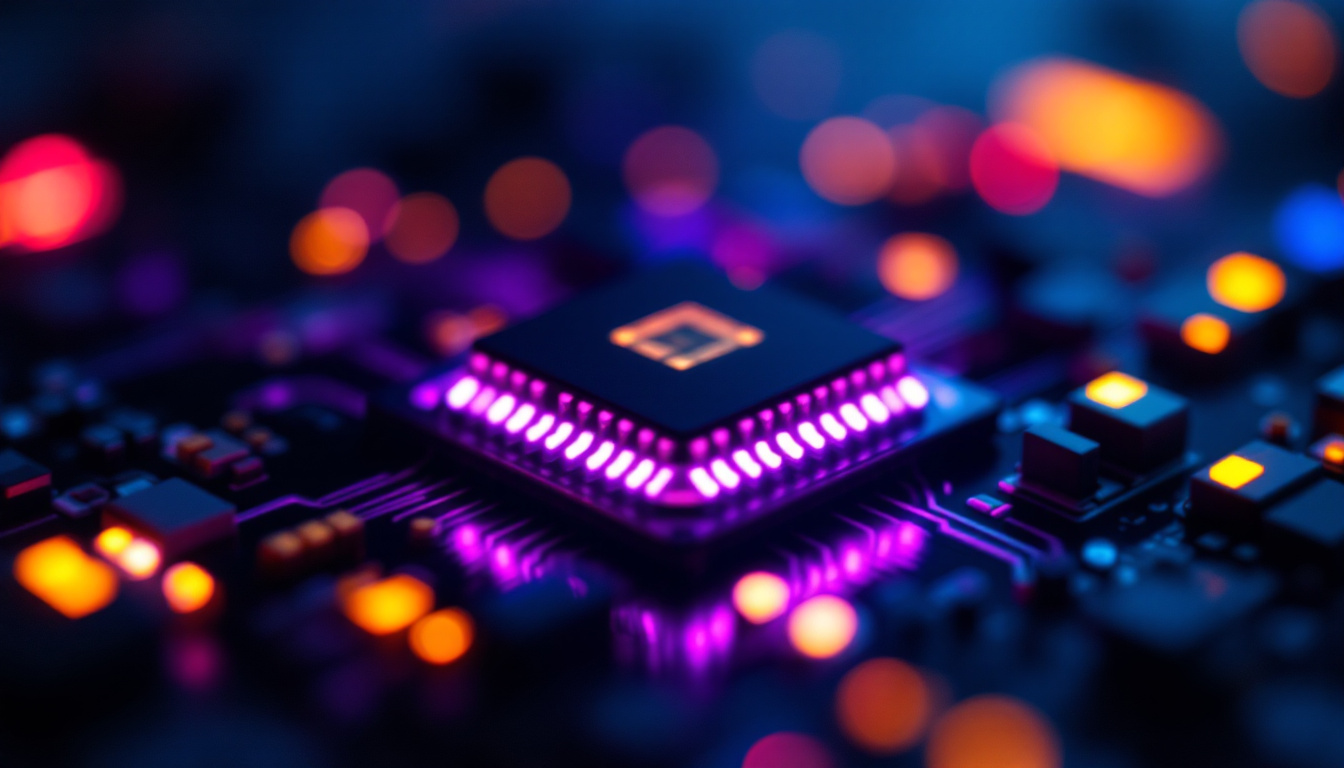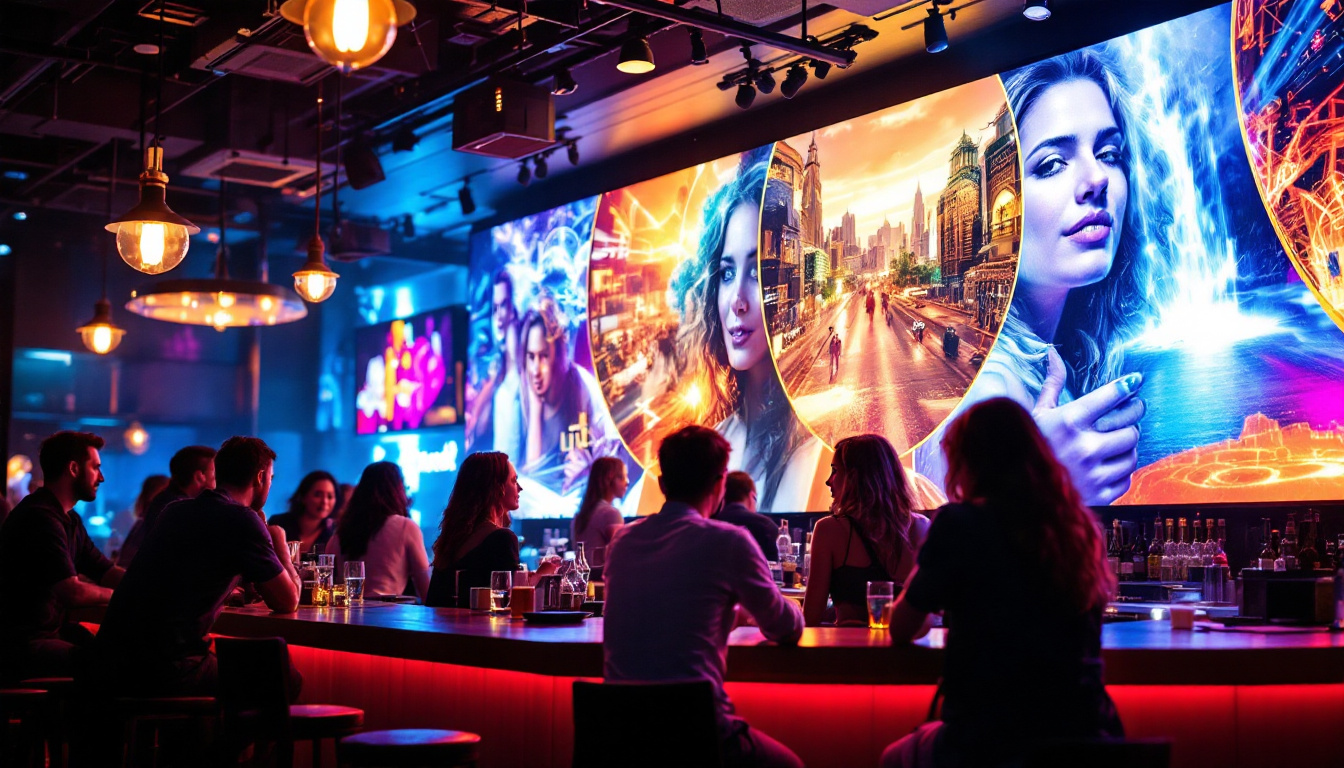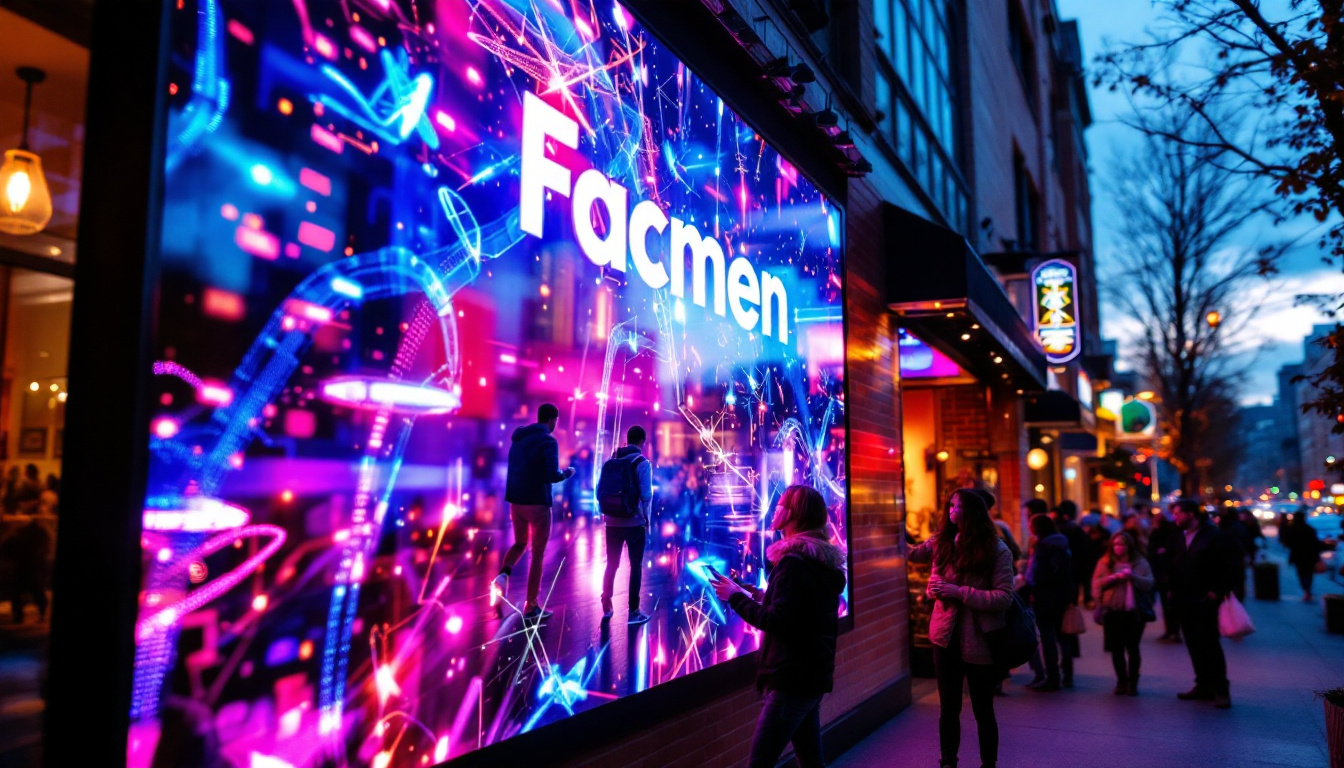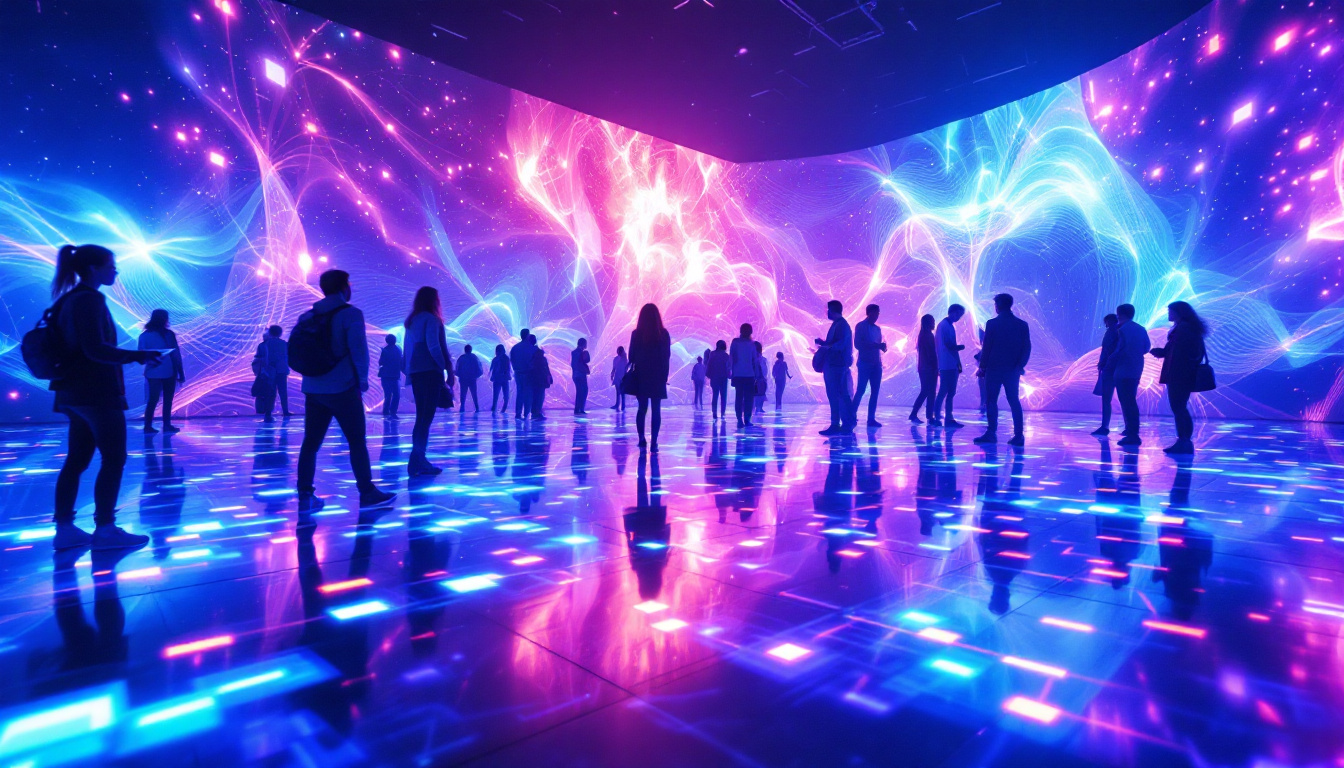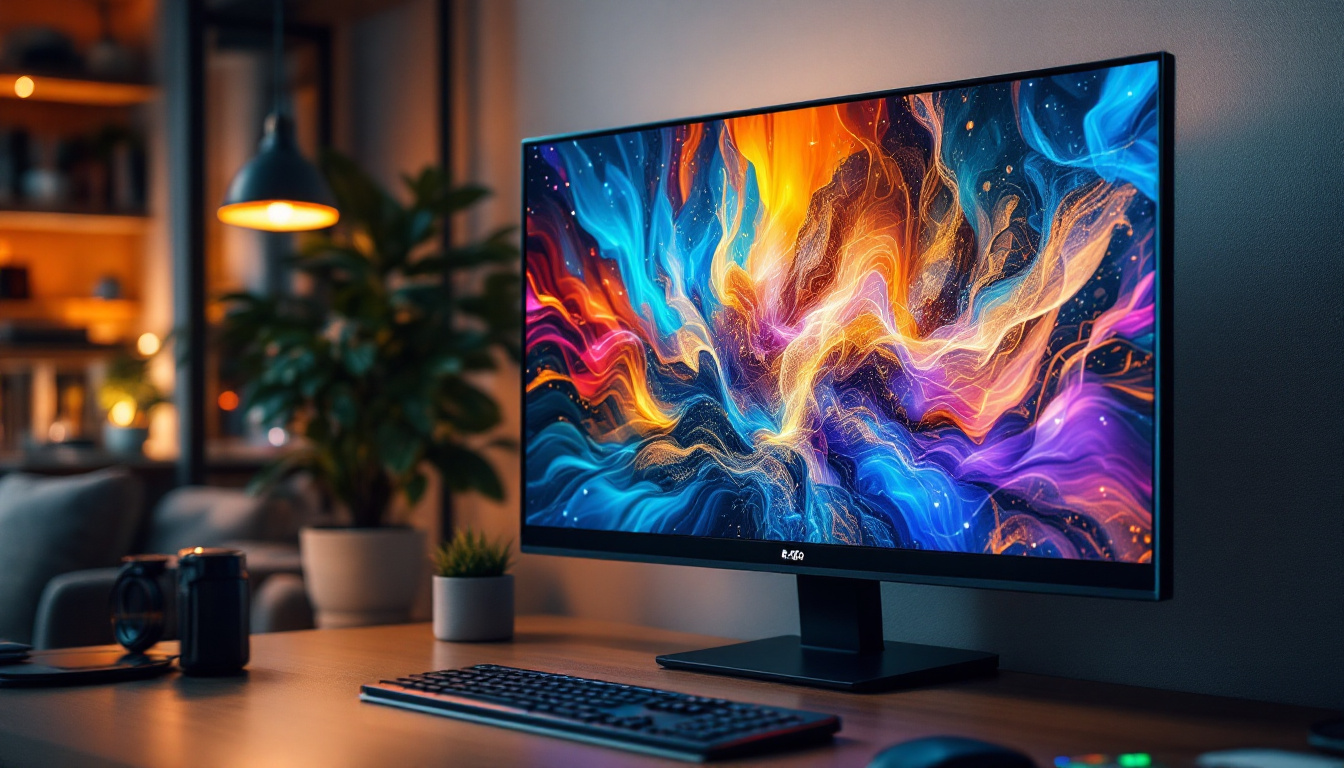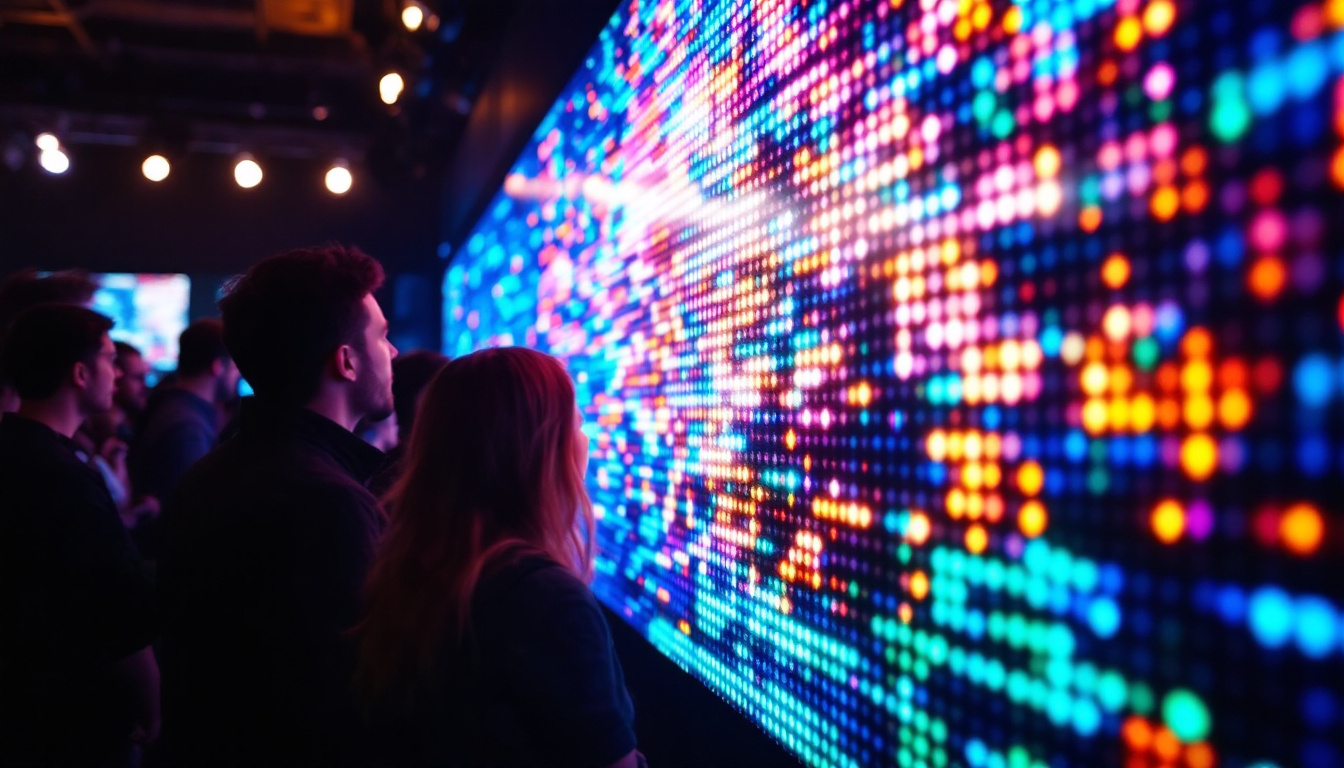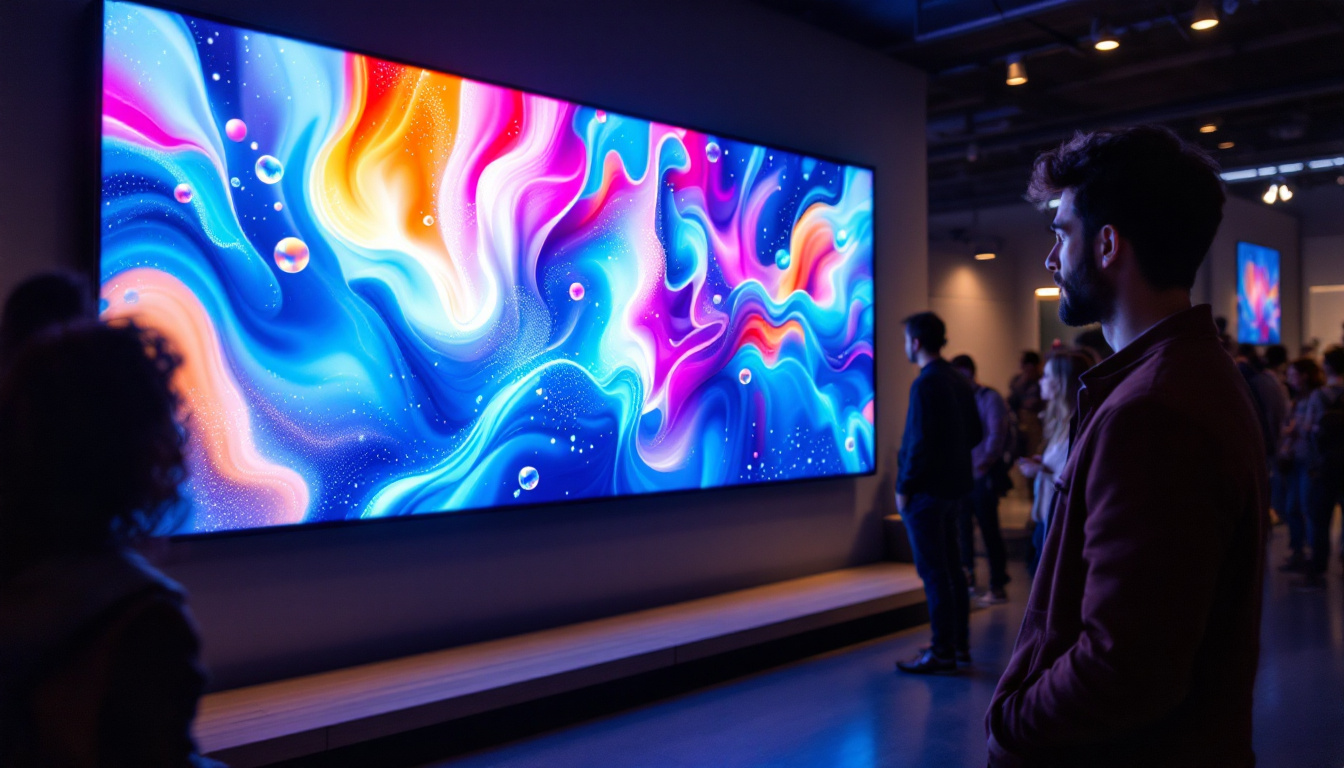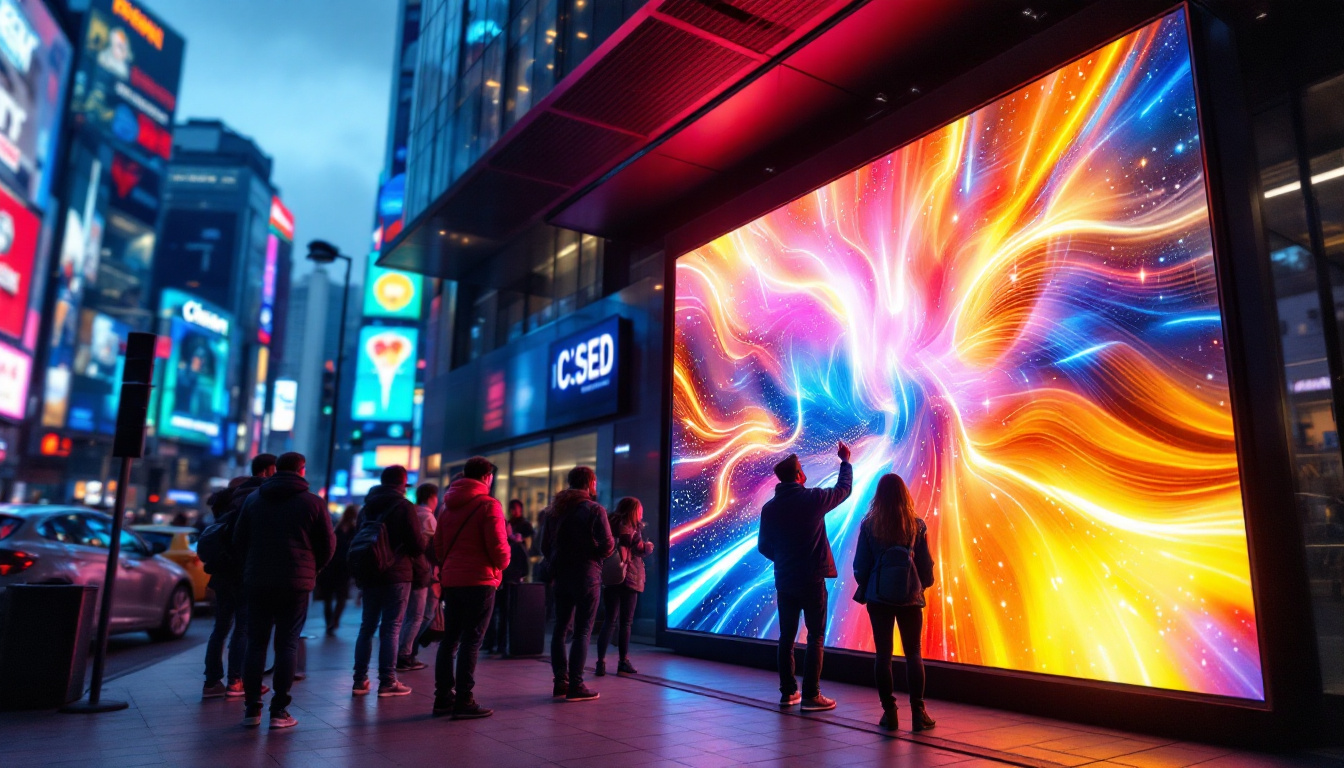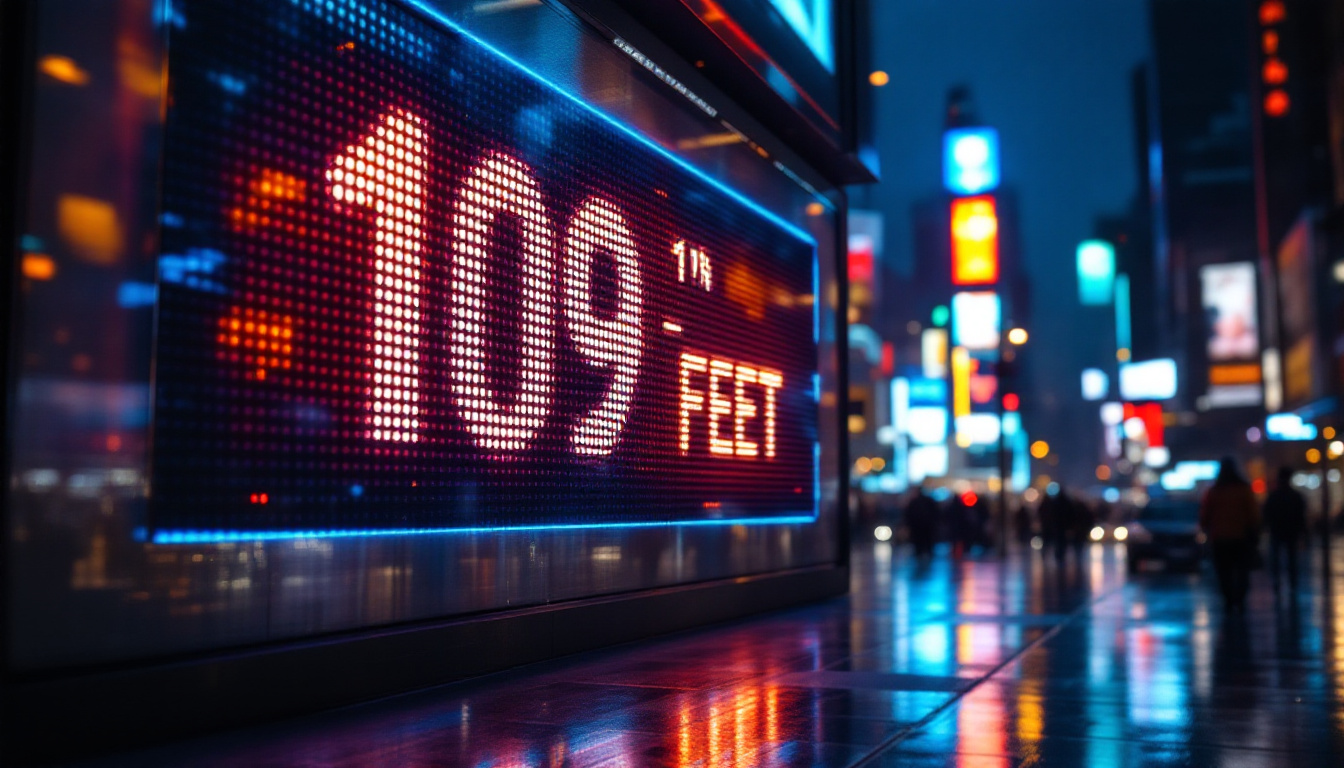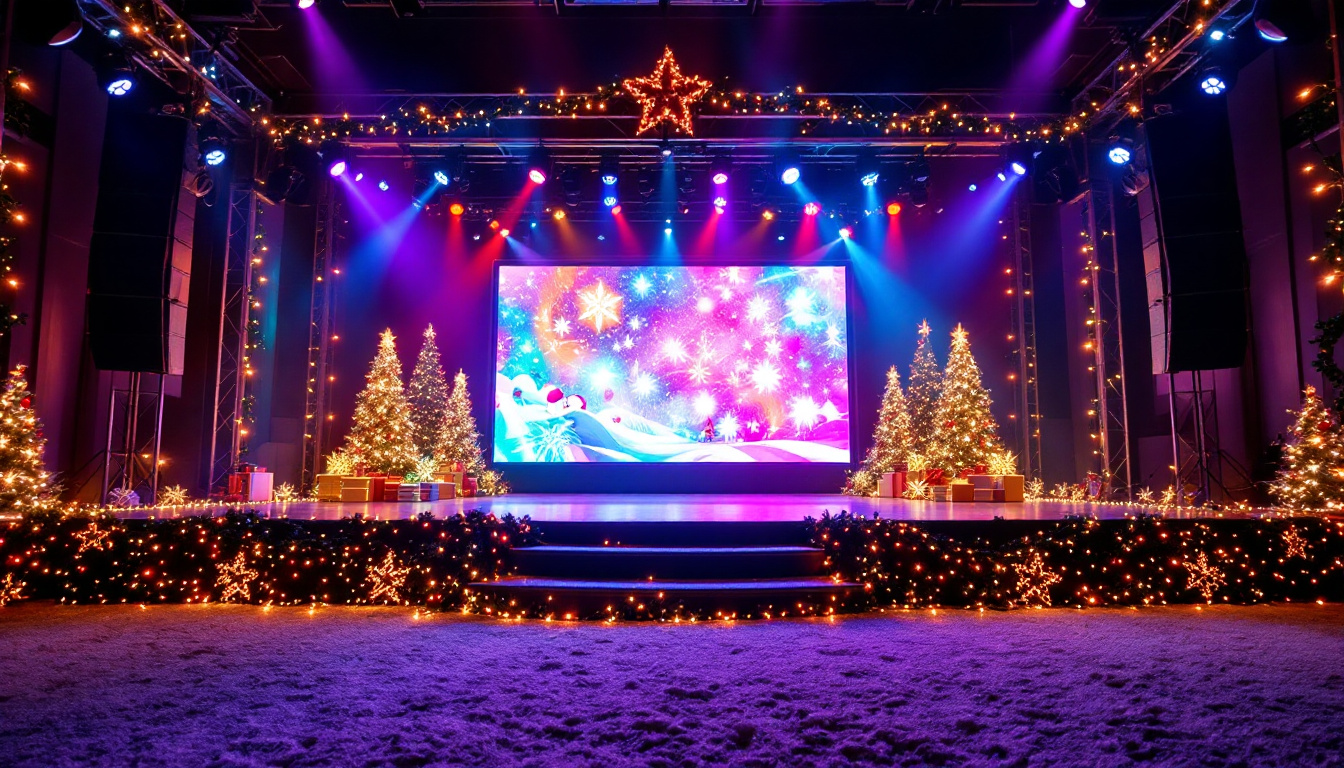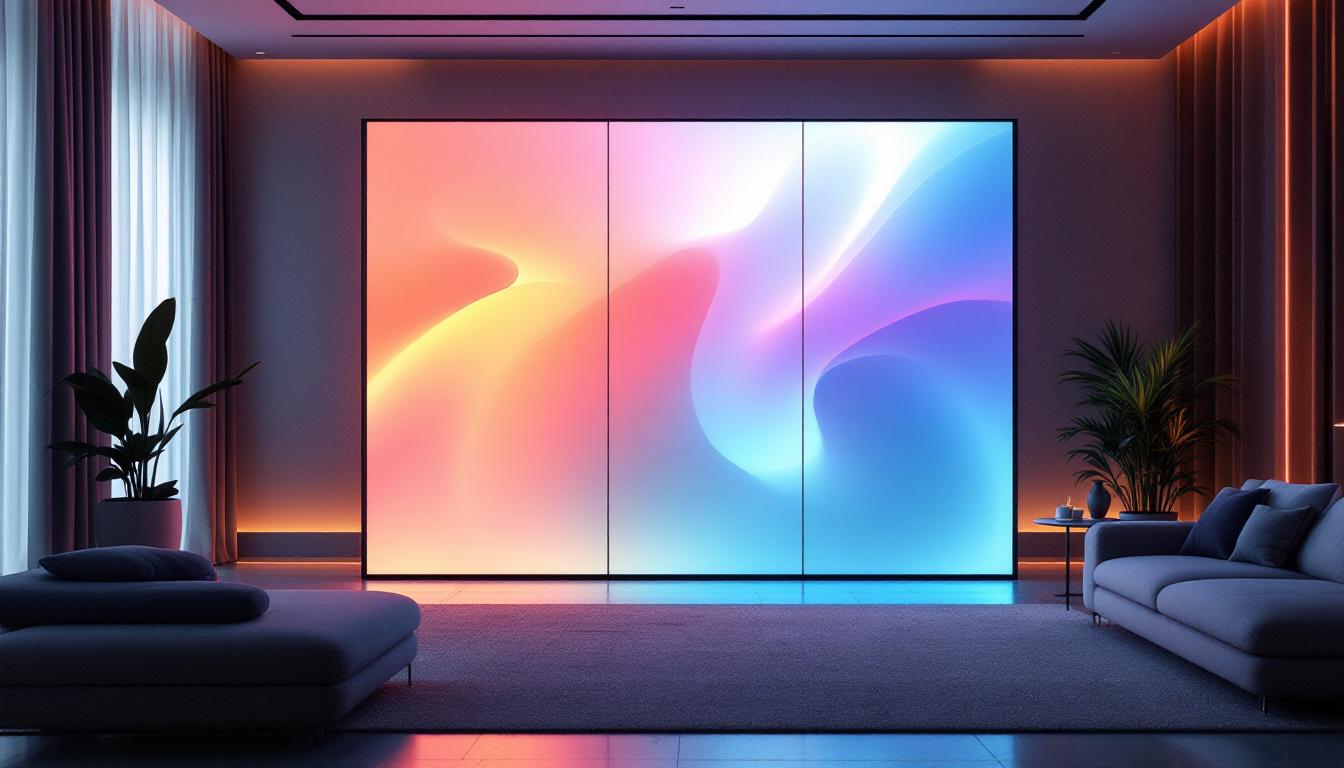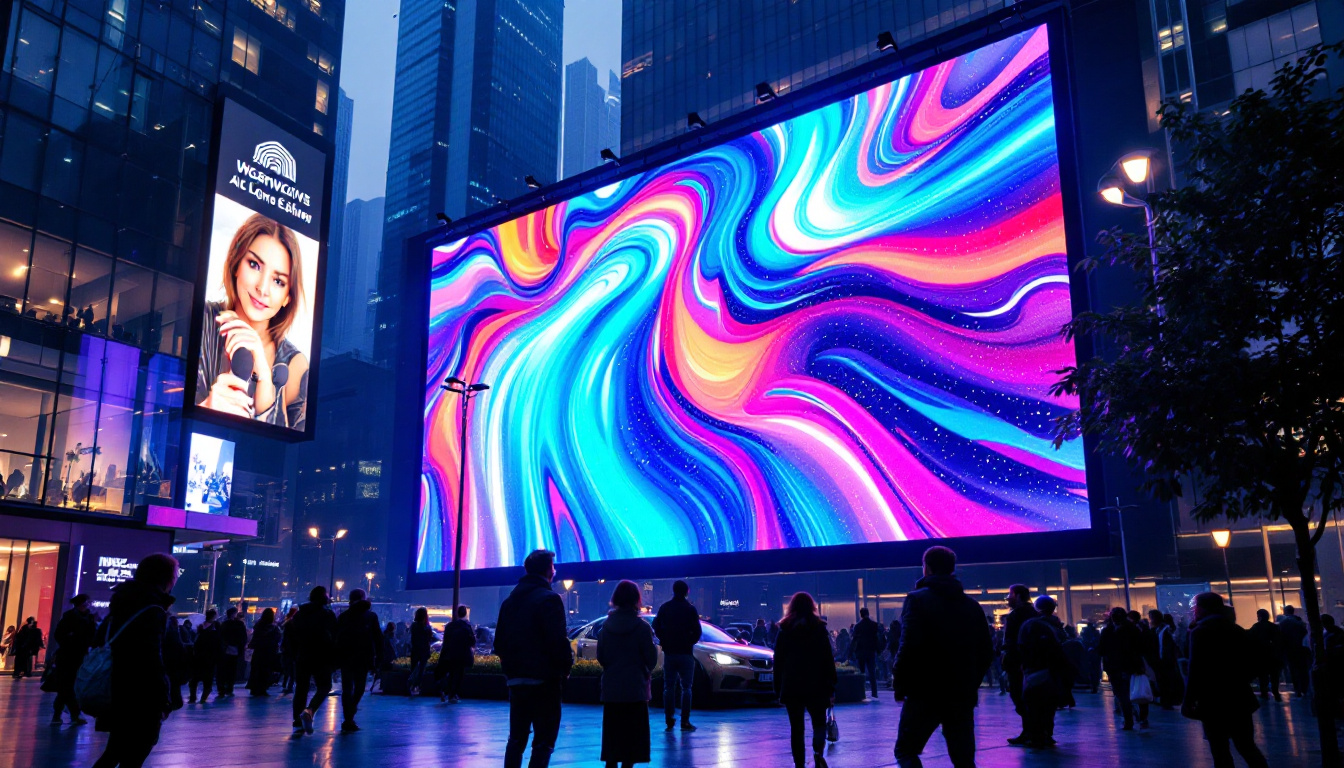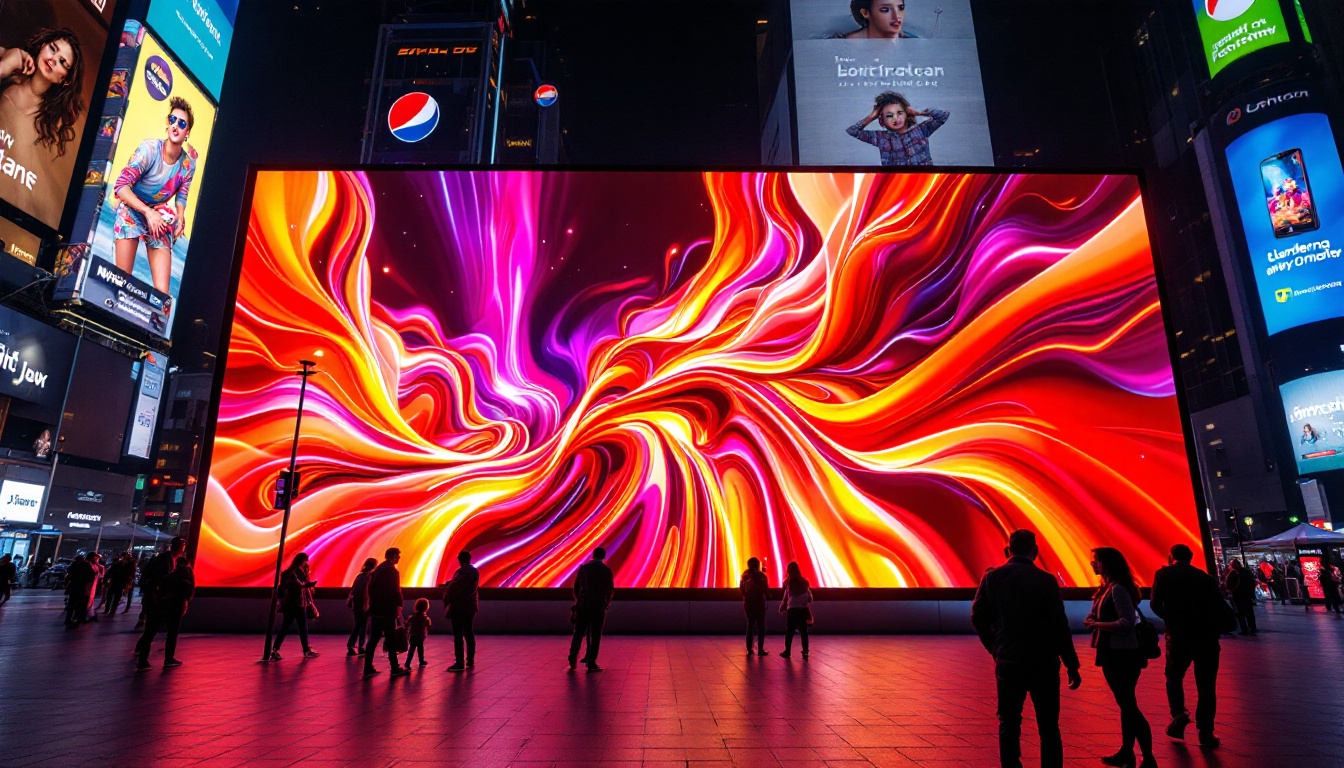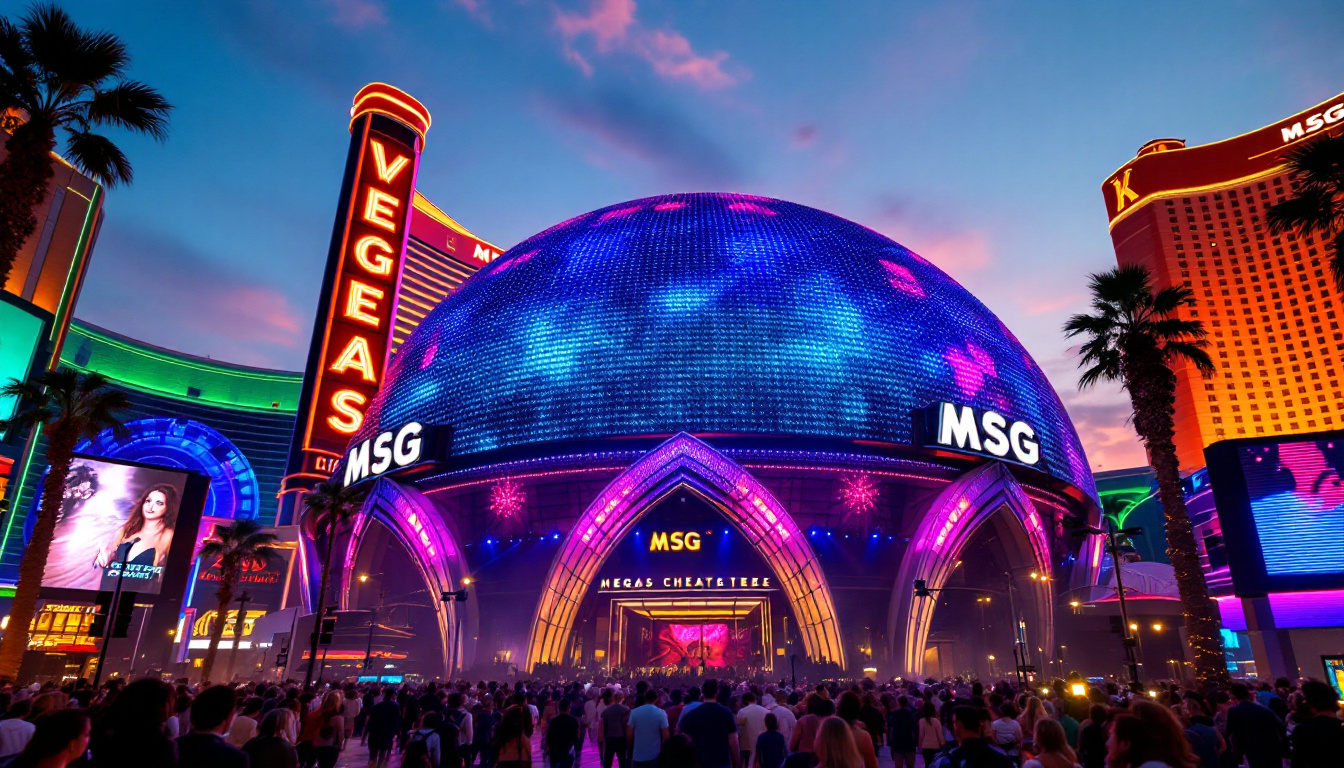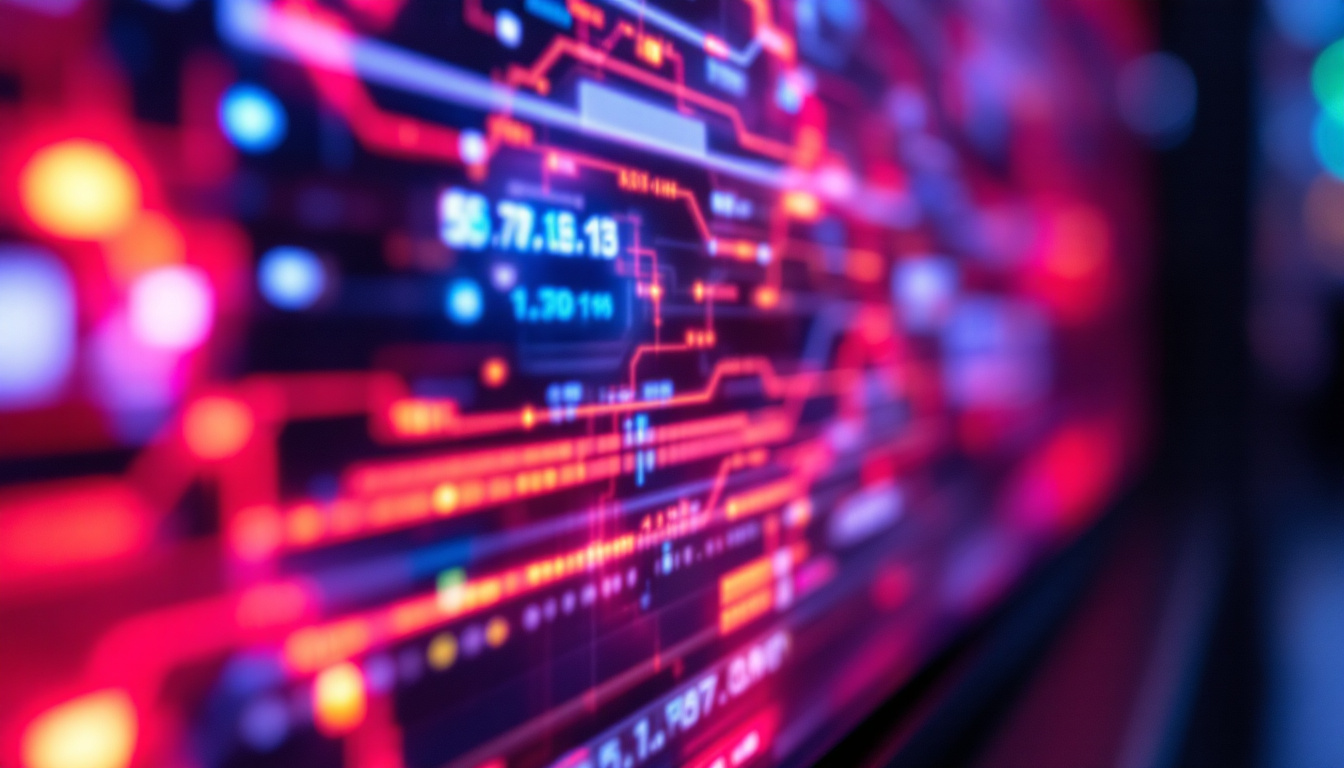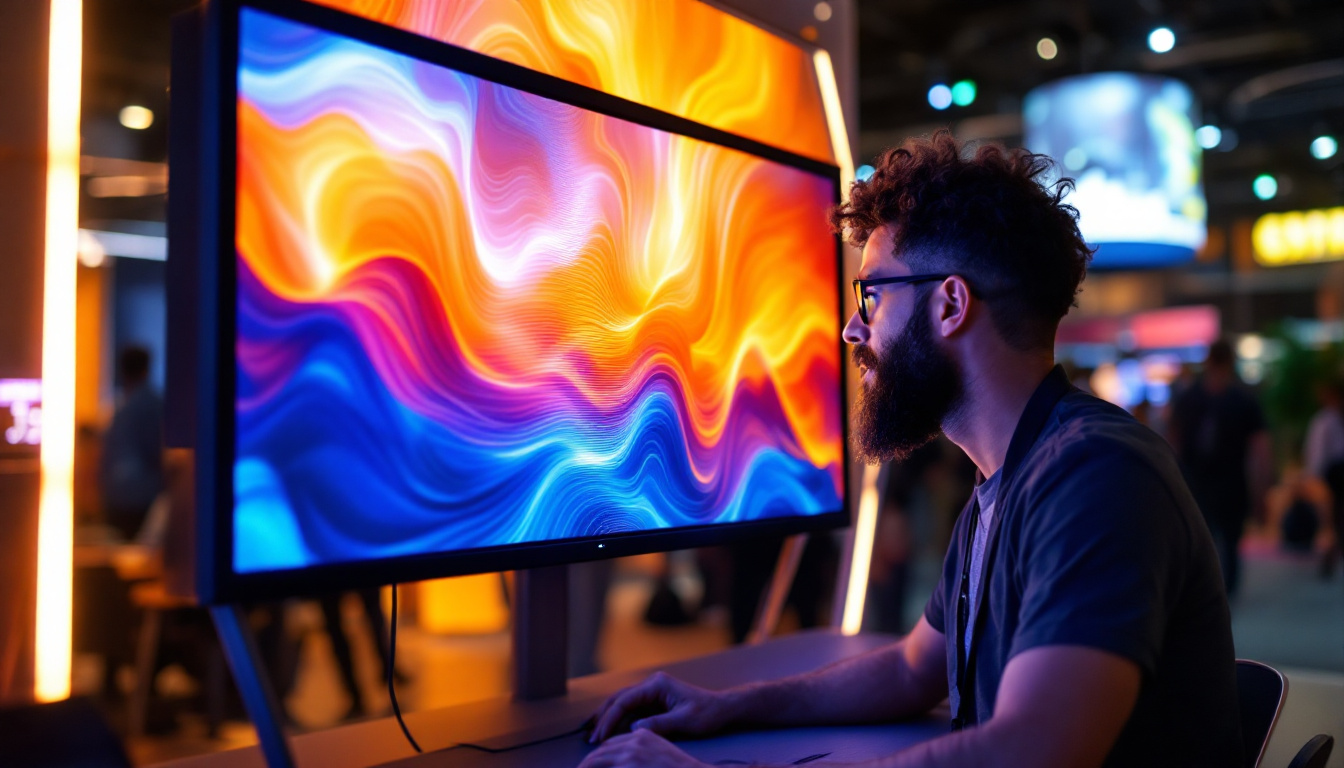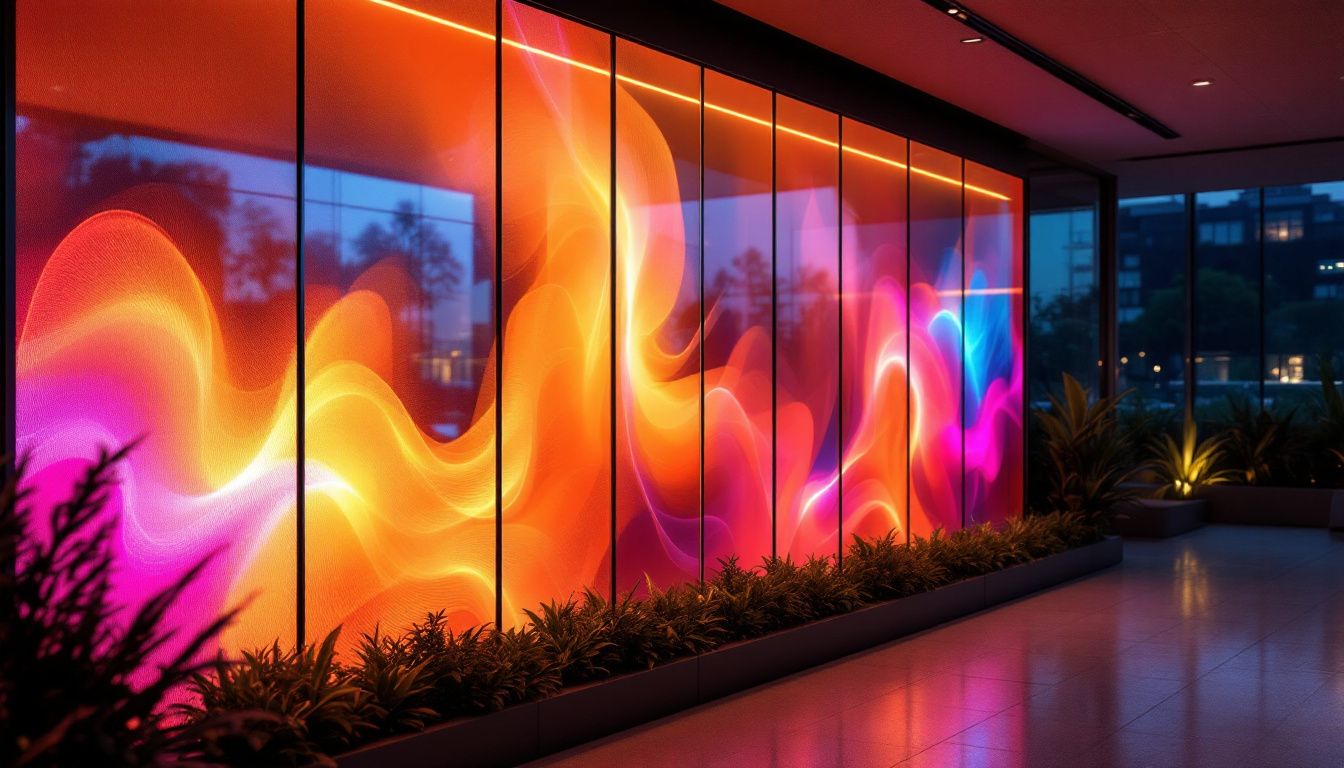In the ever-evolving landscape of digital advertising and visual communication, LED displays have emerged as a cornerstone technology. Their versatility, energy efficiency, and vibrant color reproduction make them an ideal choice for a variety of applications, from outdoor billboards to indoor signage. This article delves into the intricacies of LED displays, exploring their technology, applications, and the future of this dynamic medium.
Understanding LED Technology
Light Emitting Diodes (LEDs) are semiconductor devices that emit light when an electric current passes through them. This fundamental principle underpins the operation of LED displays, which are composed of numerous individual LEDs arranged in a matrix. The arrangement and color of these LEDs can be manipulated to create stunning visual displays. Over the years, LED technology has evolved significantly, leading to advancements in efficiency, brightness, and color accuracy, which have expanded their applications beyond traditional lighting and into the realms of art, advertising, and entertainment.
How LED Displays Work
At their core, LED displays utilize a combination of red, green, and blue (RGB) diodes. By adjusting the intensity of each color, a full spectrum of colors can be produced. This RGB model is fundamental to how images and videos are rendered on LED screens. The precision with which these colors can be mixed allows for incredibly vibrant images, making LED displays a popular choice for everything from television screens to large-scale public displays.
When an image is displayed, the LED controller determines which diodes to light up and to what intensity. This rapid switching creates the illusion of a continuous image, even though it is made up of thousands of individual lights. The refresh rate of these displays is crucial, particularly for video content, as it ensures smooth transitions and reduces flicker. Additionally, advancements in technology have led to the development of high dynamic range (HDR) displays, which can produce a greater range of colors and brightness levels, enhancing the viewing experience even further.
Types of LED Displays
LED displays come in various types, each suited for different applications. The most common types include:
- Direct View LED: These displays consist of individual LEDs that form the entire screen. They are commonly used for large outdoor billboards and digital signage, where visibility in bright sunlight is essential. The modular nature of direct view LEDs also allows for flexible sizing and shapes, making them ideal for custom installations.
- LED Backlit LCD: In this configuration, LEDs are used to backlight an LCD panel. This type is prevalent in televisions and computer monitors, offering enhanced brightness and contrast. The use of local dimming technology in backlit LCDs can further improve picture quality by adjusting the brightness of specific areas of the screen, resulting in deeper blacks and more vivid colors.
- Organic LED (OLED): OLED technology uses organic compounds to emit light. These displays are known for their deep blacks and wide viewing angles, making them popular in high-end televisions and smartphones. Unlike traditional LED displays, OLED panels do not require a backlight, allowing for thinner designs and more flexible applications, such as curved or foldable screens.
In addition to these primary types, there are also specialized LED displays designed for specific environments. For instance, transparent LED displays are gaining popularity in retail spaces, allowing for eye-catching advertisements while still maintaining visibility through the glass. Furthermore, microLED technology is emerging as a potential successor to OLED, promising even better performance in terms of brightness, efficiency, and longevity. As LED technology continues to advance, it opens up new possibilities for creative expression and functional design across various industries.
Applications of LED Displays
LED displays have found a wide array of applications across various industries. Their adaptability and visual impact make them suitable for both indoor and outdoor environments.
Advertising and Marketing
One of the most prominent uses of LED displays is in advertising. Billboards and digital signage in retail environments leverage the brightness and vibrancy of LEDs to capture consumer attention. The ability to change content dynamically allows advertisers to tailor messages based on time of day, audience demographics, or even current events.
In addition to static advertisements, LED displays can showcase video content, animations, and interactive elements, further engaging potential customers. This versatility has made them a favorite among marketers looking to maximize their reach and impact.
Events and Entertainment
In the realm of events and entertainment, LED displays are indispensable. Concerts, festivals, and sporting events utilize large LED screens to enhance the audience experience. These displays can show live feeds, graphics, and promotional content, creating a more immersive environment.
Moreover, the portability of some LED display systems allows for easy setup and takedown, making them ideal for temporary installations. This adaptability is crucial for event organizers who need to create engaging visual experiences in various venues.
Transportation and Public Information
LED displays are also widely used in transportation systems. From bus stops to train stations, digital signage provides real-time information to commuters, including arrival times, delays, and service changes. This instant communication enhances the efficiency of public transport systems and improves the overall passenger experience.
Furthermore, LED displays in airports provide crucial information regarding flights, gate changes, and security updates. Their visibility and clarity are essential in high-traffic environments where timely information is critical.
The Advantages of LED Displays
LED displays offer numerous advantages that contribute to their widespread adoption. Understanding these benefits can help organizations make informed decisions about their visual communication strategies.
Energy Efficiency
One of the standout features of LED technology is its energy efficiency. Compared to traditional incandescent or fluorescent lighting, LEDs consume significantly less power while providing greater brightness. This not only reduces operational costs but also minimizes the environmental impact.
For businesses, the lower energy consumption translates into savings on electricity bills, making LED displays a cost-effective long-term investment. Additionally, many municipalities are adopting LED technology for street lighting and public displays to promote sustainability.
Longevity and Durability
LED displays are known for their longevity. With a lifespan of up to 100,000 hours, they outlast many traditional display technologies. This durability is particularly advantageous for outdoor applications, where exposure to the elements can shorten the lifespan of other display types.
The robust construction of LED displays also makes them resistant to shocks and vibrations, further enhancing their suitability for various environments, including concerts and sporting events.
High Brightness and Visibility
LED displays excel in brightness, making them visible even in direct sunlight. This characteristic is crucial for outdoor advertising and public information displays, where visibility can significantly impact effectiveness.
Moreover, the high contrast ratios offered by LED technology ensure that images and videos appear vibrant and clear, even from a distance. This quality is essential for capturing attention in crowded urban environments.
Challenges and Considerations
While LED displays offer numerous advantages, there are also challenges and considerations that organizations must address when implementing this technology.
Initial Costs
The initial investment for LED displays can be substantial. Although prices have decreased over the years, high-quality LED screens can still represent a significant expenditure. Organizations must weigh the upfront costs against the long-term savings and benefits.
To mitigate this challenge, many businesses explore financing options or consider leasing arrangements that allow them to deploy LED technology without a large upfront investment.
Content Management
Another consideration is content management. To maximize the effectiveness of LED displays, organizations need to invest in content creation and management strategies. This includes designing engaging visuals, scheduling content updates, and ensuring that messages are relevant and timely.
Without a robust content strategy, even the most advanced LED displays may fail to achieve their intended impact. Therefore, organizations should prioritize developing a comprehensive plan for content management alongside their display technology.
Technical Maintenance
LED displays require regular maintenance to ensure optimal performance. This includes cleaning the screens, checking connections, and addressing any technical issues that may arise. Organizations should factor in the need for ongoing maintenance when budgeting for LED display systems.
Many manufacturers offer support and maintenance services, which can be beneficial for organizations that lack in-house technical expertise. Establishing a relationship with a reliable service provider can help ensure that displays remain in peak condition.
The Future of LED Displays
The future of LED displays is bright, with ongoing advancements in technology and applications. As industries continue to evolve, LED displays will play an increasingly vital role in shaping visual communication.
Advancements in Technology
Emerging technologies, such as MicroLED and MiniLED, promise to enhance the capabilities of LED displays further. These innovations offer improved color accuracy, higher resolutions, and even thinner form factors, making them ideal for a wider range of applications.
Additionally, advancements in artificial intelligence (AI) and machine learning are set to revolutionize content management for LED displays. Smart systems can analyze viewer engagement and preferences, allowing for more personalized and effective messaging.
Integration with Smart Technologies
As the Internet of Things (IoT) continues to expand, the integration of LED displays with smart technologies will become more prevalent. This integration will enable real-time data sharing, dynamic content updates, and enhanced interactivity, creating more engaging experiences for viewers.
For instance, LED displays in retail environments could adapt content based on customer demographics or behaviors, providing tailored promotions that resonate with individual shoppers.
Environmental Considerations
As sustainability becomes a priority for many organizations, the environmental impact of LED displays will be a key focus. Manufacturers are increasingly exploring eco-friendly materials and energy-efficient designs, aiming to reduce the carbon footprint associated with production and operation.
Moreover, recycling programs for old LED displays are gaining traction, allowing organizations to responsibly dispose of outdated technology while minimizing waste.
Conclusion
LED displays have transformed the way organizations communicate visually, offering unparalleled brightness, energy efficiency, and versatility. As technology continues to advance, the applications and capabilities of LED displays will expand, providing even more opportunities for engagement and interaction.
Organizations considering LED displays should weigh the benefits against the challenges, ensuring they develop a comprehensive strategy that includes content management and maintenance. By embracing this dynamic technology, businesses can enhance their visual communication and create impactful experiences for their audiences.
In a world where attention is a precious commodity, LED displays stand out as a powerful tool for capturing interest and conveying messages effectively. As the digital landscape continues to evolve, LED technology will undoubtedly play a pivotal role in shaping the future of visual communication.
Discover LumenMatrix’s Innovative LED Solutions
Ready to elevate your visual communication with cutting-edge LED technology? LumenMatrix is at the forefront of LED display innovation, offering a wide range of solutions tailored to your needs. From Indoor and Outdoor LED Wall Displays to specialized options like Vehicle, Sports, and Floor LED Displays, our products are designed to captivate and engage your audience. Experience the transformative power of Custom, All-in-One, and Transparent LED Displays. Check out LumenMatrix LED Display Solutions today and bring your brand’s message to life with clarity and impact.

